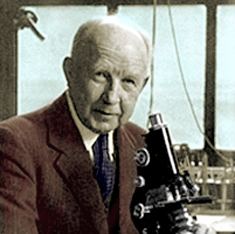Name Sydney Smith Education University of Edinburgh | Role Scientist Books Mostly Murder | |
 | ||
Died May 8, 1969, Edinburgh, United Kingdom Nominations Edgar Award for Best Fact Crime | ||
Sir Sydney Alfred Smith CBE (4 August 1883 in Roxburgh, New Zealand – 8 May 1969 in Edinburgh, Scotland), was a renowned forensic scientist and pathologist. From 1928 to 1953, Smith was Regius Professor of Forensic Medicine at the University of Edinburgh, a well-known forensic department of that time. Smith's popular 1959 autobiography, Mostly Murder, has run through many British and American editions, the latest in 1988.
Contents
Early life
Smith was born at Roxburgh, Otago, in New Zealand and was educated at Roxburgh public school, and Victoria College, Wellington. He later won a Vans Dunlop scholarship at Edinburgh University in botany and zoology. He graduated in 1912, M.B. Ch.B., with first-class honours and a research scholarship. 55
Career
Following a short period in general practice, Smith became an assistant in the Edinburgh department of forensic medicine at the suggestion of Professor Harvey Littlejohn. He obtained his M.D. in 1914 with a gold medal and the Alison prize.
Smith returned to New Zealand in 1914 and took up a post as Medical Officer of Health for Otago at Dunedin. During World War I, Smith served as a Major in the New Zealand Army Corps. In 1917, Smith took up a post as medico-legal advisor to the Government of Egypt and senior lecturer in forensic medicine at the School of Medicine in Cairo. Smith went on to establish himself as an authority in the field of ballistics and firearms in forensic medicine, publishing the first edition of Textbook of Forensic Medicine in 1925.
In 1928, Smith was appointed to the Regius chair of forensic medicine at Edinburgh University and Dean of the Faculty of Medicine, a post he held 1931 to 1953 (succeeded by Professor Thomas J Mackie.) Smith was Rector of the University of Edinburgh from 1954 to 1957. He published an autobiography, Mostly Murder, in 1959. He died in 1969 in Edinburgh.
In Queen's Birthday Honours 1944 Smith was appointed as a Commander of the Most Excellent Order of the British Empire. In the New Year Honours 1949 Smith was appointed as a Knight Bachelor and invested on 4 March 1949.
Cases
Smith's first important forensic case was the 1913 trial of Patrick Higgins for the murder of his two sons in Winchburgh, Scotland. Because of the build-up of adipocere in the bodies, a result of their being immersed in a cold flooded quarry, Littlejohn and Smith were able to provide important evidence in the trial, leading to the conviction and execution of Higgins. The two scientists' famous work gained notoriety 94 years later, when a relative of the boys asked for the return of specimens taken from their remains from Edinburgh University, for a proper burial. Research revealed that after their work on the case, Littlejohn and Smith had removed parts of the bodies from police custody to use as scientific specimens, as described in Smith's autobiography, according to Chris Paton in The Scotsman. In January 2008, the university agreed to return the remains, if the claimant could establish her relationship and the other relatives all agreed.
In 1935, Smith was one of the forensic experts involved in the identification of the bodies of the victims of Buck Ruxton, using a novel technique of forensic anthropology to superimpose a photograph over the X-ray of a victim's skull.
